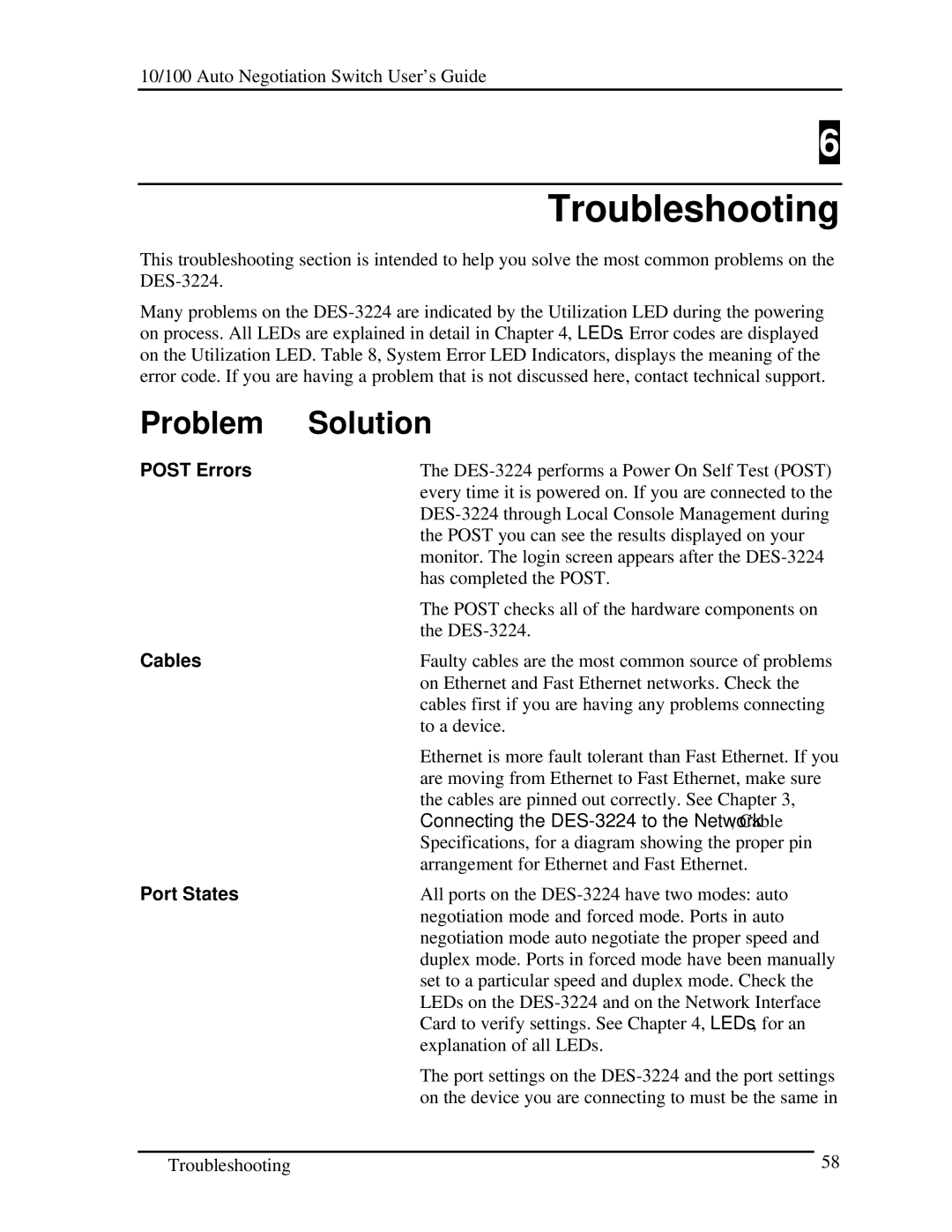
10/100 Auto Negotiation Switch User’s Guide
6
Troubleshooting
This troubleshooting section is intended to help you solve the most common problems on the
Many problems on the
Problem | Solution |
POST Errors | The |
| every time it is powered on. If you are connected to the |
| |
| the POST you can see the results displayed on your |
| monitor. The login screen appears after the |
| has completed the POST. |
| The POST checks all of the hardware components on |
| the |
Cables | Faulty cables are the most common source of problems |
| on Ethernet and Fast Ethernet networks. Check the |
| cables first if you are having any problems connecting |
| to a device. |
| Ethernet is more fault tolerant than Fast Ethernet. If you |
| are moving from Ethernet to Fast Ethernet, make sure |
| the cables are pinned out correctly. See Chapter 3, |
| Connecting the |
| Specifications, for a diagram showing the proper pin |
| arrangement for Ethernet and Fast Ethernet. |
Port States | All ports on the |
| negotiation mode and forced mode. Ports in auto |
| negotiation mode auto negotiate the proper speed and |
| duplex mode. Ports in forced mode have been manually |
| set to a particular speed and duplex mode. Check the |
| LEDs on the |
| Card to verify settings. See Chapter 4, LEDs, for an |
| explanation of all LEDs. |
| The port settings on the |
| on the device you are connecting to must be the same in |
Troubleshooting | 58 |
